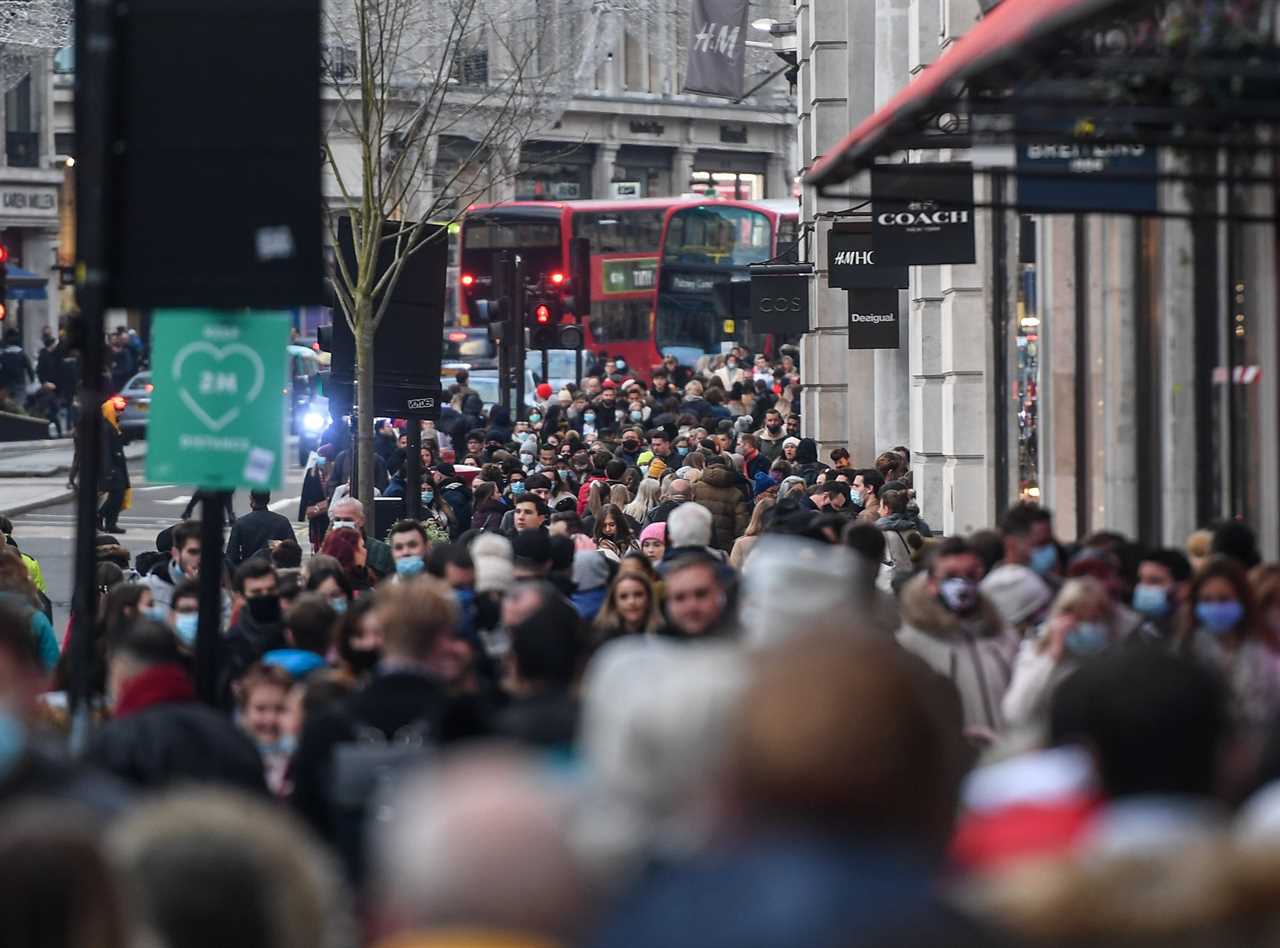COVID cases are on the rise in 62 local authorities in England just days before the revision of the tier system.
It puts them at risk of moving from Tier 2 to Tier 3 in the lead up to Christmas, which would see the closure of pubs and restaurants.
The speed at which infections are increasing is one of the key criteria ministers use to decide which areas need tougher restrictions.
It means London, Essex, and other authorities in the south are potentially at risk of bumping up to the “high alert level”.
They currently fall under Tier 2 restrictions, which still allows for people to meet friends outdoors in groups of six, such as in pub gardens.
The highest infection rates in London are in Havering, Barking and Dagenham and Waltham Forest – all in the top 10 Covid hotspots of England.
While in Essex, the virus is spreading fast in Thurrock, which has the 13th highest rate in the whole of England, and Southend-on-Sea, at 28th place.
At last night’s Downing Street Briefing, the Health Secretary Matt Hancock admitted he was particularly concerned about the number of case in London and Essex, as well as Kent, which is already in Tier 3.
London mayor Sadiq Khan said London is at a “serious tipping point” in the coronavirus outbreak, and the capital should “prepare for additional restrictions”.
A third of places with worsening outbreaks are in London, feared to be hurtling towards Tier 3 to control the spread of the virus in the capital.
London MPs are in urgent talks with health ministers to discuss the next best step for the capital, with the toughest restrictions predicted to cause 150,000 job losses.
London has the worst infection rate of all nine regions in the UK – almost 200 cases per 100,0000 people.
However, Professor Tim Spector said Covid-19 rates in the over 60s in London are “not yet worrying”.
The scientist tracks the outbreak in the UK using the Covid Symptom Study app.
The Government considers cases in the over 60s along with how many people are in hospital for deciding tiers – not just case numbers.

The fastest rise by far is among secondary school age children, while the rate among adults is broadly flat.
However, Mr Hancock would not pre-empt whether London would be bumped into the highest alert on December 16, the first review of the tiered system.
The data shows almost every place seeing worsening outbreaks are in the south of England.
Bracknell Forest, Central Bedfordshire and Southend-on-Sea saw cases increase by the most.
Cases rose by at least 50 per cent in each of those authorities in the week to December 6, Public Health England (PHE) data shows.
Meanwhile, the majority of those under the toughest restrictions in the north have shown an impressive turnaround.
It suggests the Tier 3 restrictions in the North West, Yorkshire, North East and Midlands have worked in suppressing the virus.
Professor Chris Whitty, England’s Chief Medical Officer, praised the “remarkable” work that has been done in the Midlands and North at the press briefing last night.
Where are cases growing the most?
The data comes from PHE’s Covid-19 and flu surveillance report, published every Thursday.
For each area, cases are given per 100,000 people which can be compared with previous weeks.
But the data is only preliminary and may change slightly over time.
The early data shows 62 areas of England saw a rise in infection rates in the week to December 6, even if if was just by a small percentage.
The largest jump in cases was recorded in Bracknell Forest, Berkshire, south England. Cases went up by 70 per cent, from 97 cases per 100,000 to 166.
For comparison, it’s infection rate is still several times lower than Medway, at the top with 576 new cases per 100,000.
Sixteen places in England saw new case rates jump up by more than a third, compared to only one the week prior (to November 29).
These were Bracknell Forest, Milton Keynes, Greenwich, Bath and North East Somerset, Essex, Havering, Thurrock, East Sussex, Wokingham, Harrow, Waltham Forest, Haringey, Enfield, Southend-on-Sea, Hackney and City of London and Central Bedfordshire.
Meanwhile, on the other end of the scale, the coronavirus epidemic continues to improve in the Isle of Wight, where cases dropped by 45 per cent.
The island’s infection rate is just 16 cases per 100,000. It is the only place in Tier 1, alongside Cornwall and Isle of Scilly, which also saw a 23 per cent reduction.
After Medway, Havering in London has the second highest case rate in all of England, at 389 per 100,000.
Of the 10 current Covid “hotspots”, six are in London.
The North-South split
Of the 62 local authorities with a rise in cases, 52 were in the south or west of England.
Three places – Norfolk, Cambridgeshire and Peterborough – were in the East of England, with Sunderland in the North East.
Two authorities were each in Yorkshire (Middlesborough and Doncaster), the Midlands (Rutland and Leicestershire) and the North West (Cumbria and Bury).






